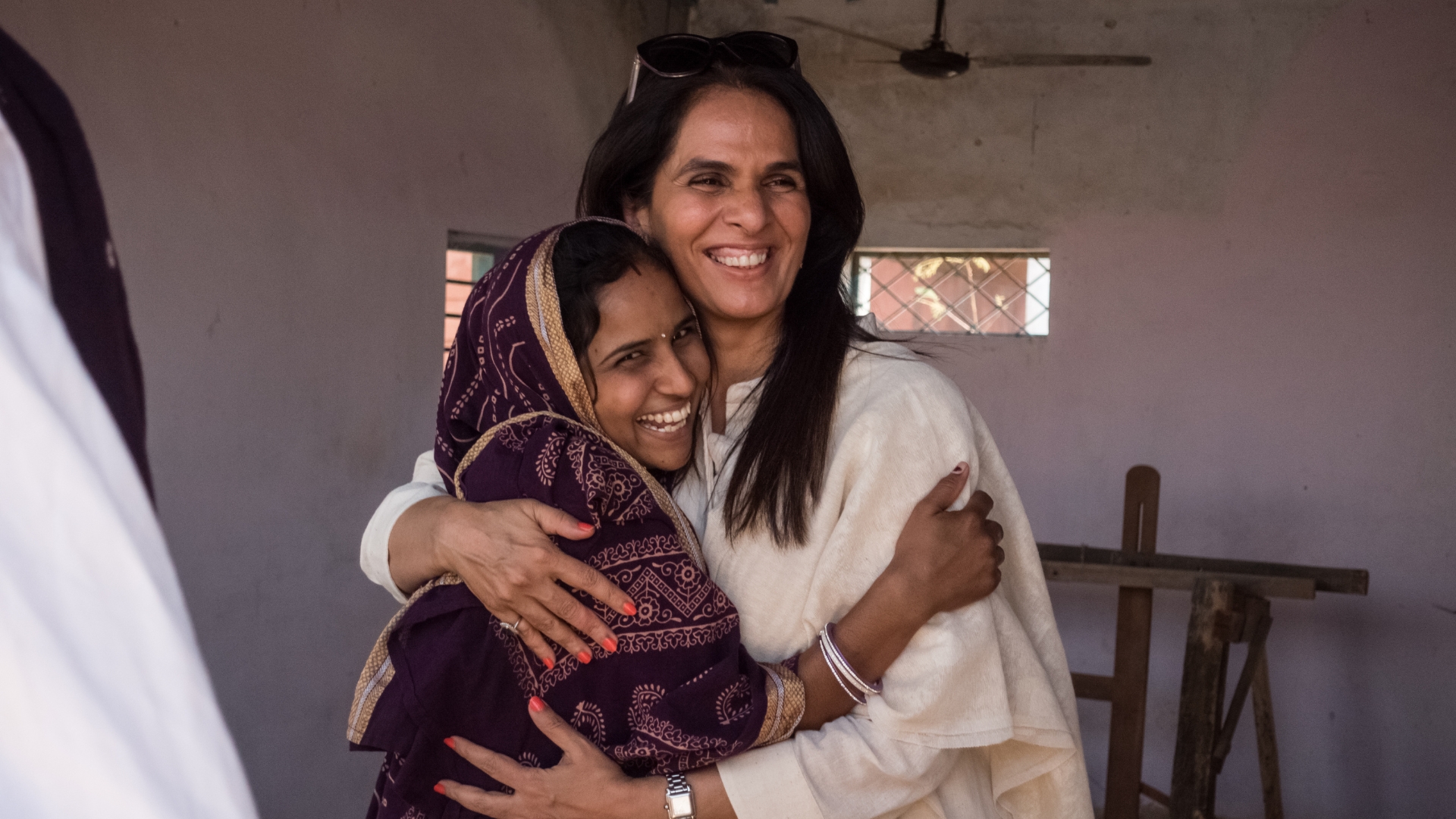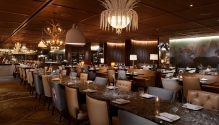A Designer’s Journey of Memories and Inspiration
Childhood train rides, Jaipur’s vibrant bazaars, craft explorations across India, and wellness retreats in serene destinations—Anita Dongre reflects on how travel, family, and heritage have shaped her life, work, and love for slow living.
By Pooja Bhulla
Train rides are my most memorable early travel experiences. The entire family in the train, stopping at stations, switching to a steam-engine train at Sawai Madhopur because there were no direct trains to Jaipur, coolies, and the whole landscape changing as you entered Rajasthan…trains are an amazing way of travelling in India or anywhere in the world.
I spent all my vacations in Rajasthan because my mom’s and dad’s parents lived in Jaipur. Just recently, after years, I took a train back from Baroda. It brought back so many memories. I called my mom and said, “I'm just remembering all our summer vacations (when we travelled to Jaipur) by train…you’re a crazy woman. How did you have six of us (siblings)? And travel by train, and change them?” She’d have luggage and we all still came back intact. I was laughing.
I was also telling a colleague travelling with me about our fashion show on Deccan Odyssey about 20 years ago. It was tourism minister Suresh Shetty’s idea. They were launching this lovely train and wanted to do something to highlight it. So we had all our guests come to VT station (now called CST), sit in the train, and it travelled an hour-and-a-half outside Mumbai and returned. We did the fashion show along the journey. The show made it to the Limca Book of Records as India’s first fashion show on a train.

The bazaars of Jaipur have shops of artisans making their crafts right there, on the road.
I'm supremely grateful for those holidays. We lived in a joint family in both my grandparents' homes; 25-30 cousins slept on the terrace... Being part of a large family teaches you a lot—to be resilient, share, care, get along with different people, and manage people. Moreover, we got exposure to the wildlife and trips to Ranthambore. I got to see a different side of India, which as a Bandra-born city girl, I otherwise wouldn't have experienced so intimately. It all helps later in life.
Has Jaipur inspired me design-wise? My nani (maternal grandmother) lived near M.I. Road. So, on all evenings and weekends, mami (maternal aunt) took us to bazaars near Hawa Mahal. Artisans making lac bangles, little jewellery shops, tie-and-dye Bandhani shops, Leheriya shops, many artisans made their crafts right there, on the road... you have to explore it to experience the energy. Watching all that, walking into stores on M.I. road…all handicraft emporiums and crafts from the entire region were available there. For me as a young child, it was a very different world.

On a wildlife holiday with husband and son.
What still excites me most about being a designer in India is India itself. The fascination started with Rajasthan, but today Gujarat fascinates me, every region does. Recently, at Kula Conclave by 200 Million Artists in Goa, I met artisans from the northeast, and down south...all beautiful crafts! They’re so exciting to work with because, like our cuisines, they also vary from region to region—each region has its nuances and skill sets. There’s so much to explore and do from a design viewpoint.
We started craft trips to different regions years ago. They’re pure work trips, but beautiful because you meet artisans in their environment. Like at Bhuj, we sat in the weaver's house and got to know the family; like most weaving and craft clusters in India, they work from their homes. It’s lovely to be part of their lives, understand them, see first-hand how they work, and use that to create designs. It offers insights into what one can or can’t do because you have to understand their skills and discuss with them what’s possible and what’s not. It creates a huge emotional connect. So the initial trips I did were very important in understanding this part of India, the villages, and how they live and work. I wish everyone in cities gets to see more of the real India, the soul of India, or the rural areas. It teaches you a lot of compassion and empathy.

What still excites Dongre the most about being a designer in India is India itself.

The artisans of Maheshwar weave delicate Maheshwar saris and textiles.
I took my design team along because I needed them to be moved by this whole story of what we’re doing. Now, there’s so much work pressure, it’s a luxury for me; the teams go without me and bring back lots of videos and pictures. We’ve been to SEWA, Barmer, Rajasthan ahead of Jodhpur, we go to Jaipur constantly, then Maheshwar (in Madhya Pradesh), Gujarat, some handloom regions in Bengal and weaving clusters in Benaras. I've shot a CNBC documentary in a village with weavers in Banaras (Varanasi); we've also shot a film with weavers honouring Bhuj.
My husband’s a huge wildlife enthusiast, so our first date was at Sanjay Gandhi National Park. Leopard spotting. I was given a torch and told, now look in the dark and when you see those two light spots, that's a leopard. I said, sure, and became an expert at spotting animal eyes in the dark. Then there were bird-watching dates. Dates were always with wildlife. When Yash (her son) was growing up, every year we took him to sanctuaries in India. We also took him to Africa.

Many of Dongre's journeys are centred around work—like her visits to weaving centres of Varanasi.
I don’t remember much about my first trip abroad, to Bangkok. It was around my early 20s because a cousin lived there. But my first actual global trip was to Turkey. We’d just married, I was 24, and Praveen (her husband) announced we had to move there permanently because he had to set up an office. So we rented a house in Mersin, a port city. I missed my work terribly, but newly married, I was trying to fit in and say, ‘Okay, all is well’. Luckily, after three months, Praveen realised he couldn't stay abroad, I wanted to come back too, and we returned. But I learned a lot about Turkish culture because I lived in an apartment building with Turkish neighbours, and spent my days walking around, seeing Turkey, the museums, crafts... there are a lot of crafts there too.
We travelled a lot to Europe. I'd look at everything they do and say, ‘We have so much back home, why aren’t we marketing it enough?’ I still say this. They do a better job of marketing, ensure their cities are clean, and take so much pride in maintaining what they have. And then show it off so beautifully. Our palaces and forts are spectacular, but we need more. We need to cherish and preserve what we have, and learn the art of storytelling, so more people can see more of India than just destinations like the Golden Triangle. There's so much more to India than what's already being shown.
Walking the streets of any Italian city always reminds me of Rajasthan. For some strange reason, I’d find this huge connection. I resonate with the fashion, art, culture, people, energy and warmth. Italians are also like us—large families, family loving, get-togethers, love for food...
Now the desire to see is gone, just the desire to be is there. In your younger days, you want to explore, and travel. We always did a balance, about two holidays a year. One city holiday, taking Yash around. In London, the first two days were always at the museum. And then a couple of small wildlife trips. But now, I don't like packed trips. I want time to see things, but also to relax. When I wake up in the morning, I don't want fixed plans. I like playing it by ear.
Today, for me, a holiday is to check into one hotel or one destination for five days and not move out. Just chill, because there's so much activity in life. On my last holiday with the family, for my 60th birthday last year in Maldives, we did exactly that. Just lie on the beach, stare at the sky and the water, with no agenda.

Dongre often travels with her colleagues, friends and family and prefers a 'slow' holiday.
I prefer the comfort of home food and familiar surroundings. When I need a break, I go to Pawna. My husband’s developed a little farmhouse in a village. It's just two-and-a-half hours away. Very basic with a small pool and a nice lawn to walk on. I don’t like travelling anymore. Security lines, plane rides, packaged food—it’s exhausting. Sometimes I have to travel for work, but keep it to a bare minimum. Slow living is what I like now.
A wellness holiday is all I crave. Once a year, since 2018, I’ve been going to Viva Mayr in Austria. I stay at the wellness spa, amidst mountains, and the lake it sits on for 10 days, and take the flight back. It’s to detox. No sightseeing. Nothing.
I like hotels serving vegan, organic, freshly grown food. The last holiday where I enjoyed the food, pure food, was eight to nine years ago at Vana, now taken over by Six Senses. I always do wellness places by myself. I did a detox for seven days. I gave up my phone at the registration desk when I walked in. You do your yoga and massages. It’s rejuvenating.

Viva Mayr in Austria, a wellness spa set amidst mountains, with a view of the lake, is the designer's favourite wellness vacation.
Anita's Favourite Craft Markets
Bhuj
To buy weaves and for its craft clusters. Located in the Kutch region of Gujarat, it is known for its rich and diverse textile traditions such as Ajrakh block printing using natural dye and plant-based colours, tie-and-dye Bandhani, handloom weaving; and embroideries of the Rabari and Ahir tribes.
Jodhpur
For interesting textiles. The ‘Blue City’ of Rajasthan offers a rich array of textiles that reflects the region’s heritage, including Leheriya with diagonal stripe patterns representing waves, block-printed fabrics, handloom khadi and cotton, and embroidered fabrics.
Jaipur
For jewellery. The city offers a variety of handcrafted pieces that reflect rich heritage and craftsmanship, like kundan, polki, meenakari, thewa, and lac. It is home to several big homegrown jewellery brands that own large retail stores.

Jaipur offers a variety of handcrafted pieces that reflect rich heritage and craftsmanship, like kundan, polki, meenakari, thewa, and lac.

Bhuj is known for its rich and diverse textile traditions such as Ajrakh block printing, tie-and-dye Bandhani, handloom weaving and embroideries of the Rabari and Ahir tribes.


























